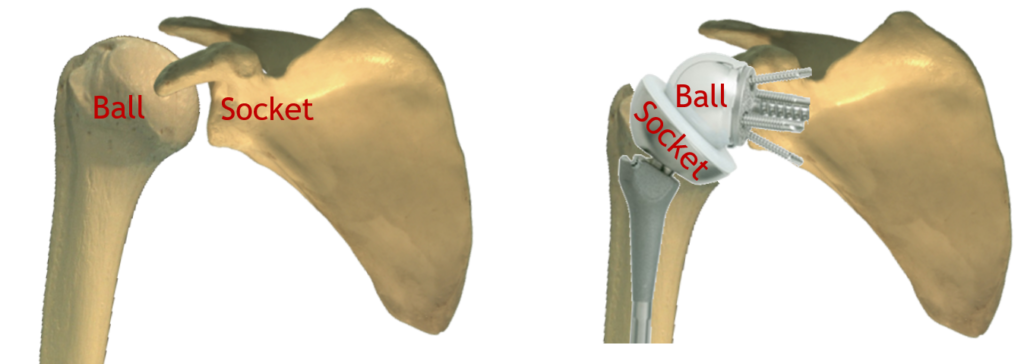REVERSE SHOULDER REPLACEMENT

What is rotator cuff arthropathy?
The ball and socket joint of your shoulder form when the head of your upper arm bone and the shoulder socket meet. The rotator cuff is comprised of four tendons that surround this joint to provide stability and mobility. When any of these tendons tear, it can lead to excessive wear and tear to your shoulder joint and result in arthritis.
Conventional shoulder replacements aren’t effective in reducing the pain associated with this condition, known as rotator cuff arthropathy.
What are the symptoms of rotator cuff arthropathy?
You may feel shoulder pain regularly even at night, as well as weakness in the affected shoulder. You may have had a prior rotator cuff repair, or even multiple repairs, but continue to feel pain. Inability to raise your arm overhead is a telltale sign of rotator cuff injury.
How is a reverse shoulder replacement different than conventional joint replacement?
During conventional shoulder replacement surgery, doctor replaces the ball of the arm bone with a metal ball and the shoulder socket with a plastic socket. This addresses pain from arthritis, but if you have a torn rotator cuff, you’re still subject to joint instability and possible loosening of the implant.
With a reverse shoulder replacement, doctor “reverses” the placement of the components. Doctor places the ball into the shoulder blade and fixes the plastic socket on top of the arm bone. You’re better able to use the deltoid muscle, which compensates for your compromised rotator cuff.
Who is a candidate for a reverse shoulder replacement?
Doctor carefully examines your shoulder, medical history, and recovery potential when considering whether you’re a candidate for the surgery. He may recommend the procedure in the following circumstances:
- A completely torn rotator cuff that is difficult to repair
- Rotator cuff arthropathy
- Severe shoulder pain that’s especially aggravated by performing overhead activities
- Pain despite treatment from medication, cortisone injections, and physical therapy
What should I expect during the reverse shoulder replacement procedure?
You’re under general anesthesia for the procedure. Doctor exposes the shoulder joint and removes arthritic and damaged tissue and replaces it with artificial components.
Expect to stay in the hospital for between three to four days.
If you have severe shoulder pain, contact Dr. Harsha C M or book an appointment online to discuss possible treatments, including a reverse shoulder replacement.
